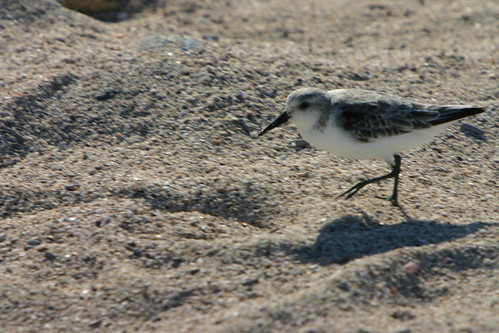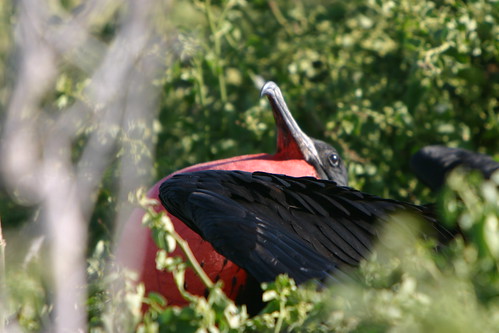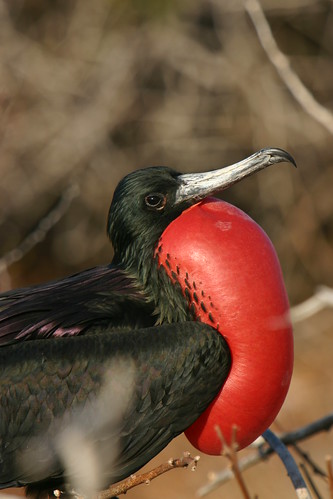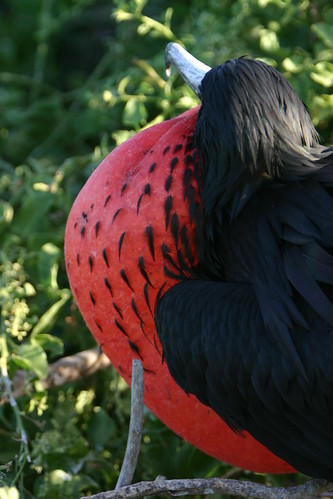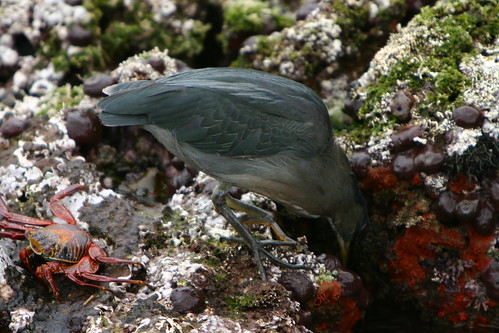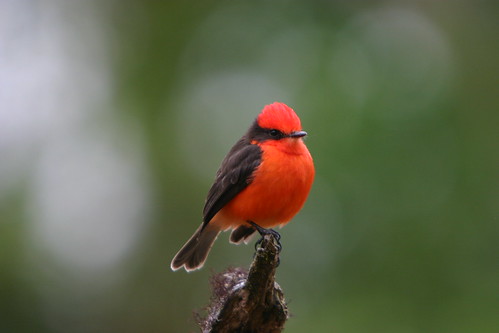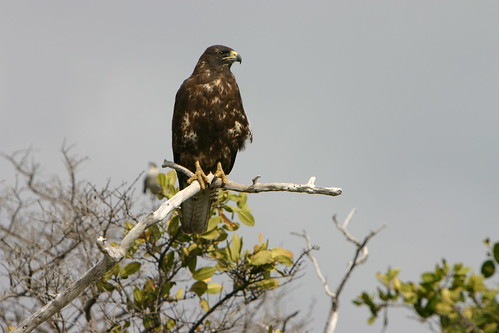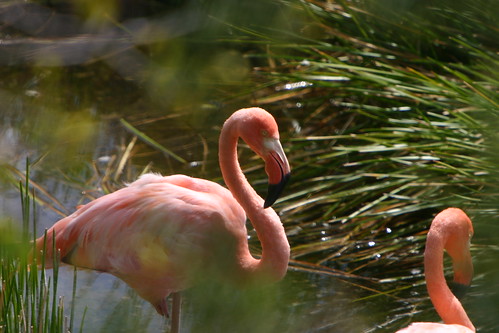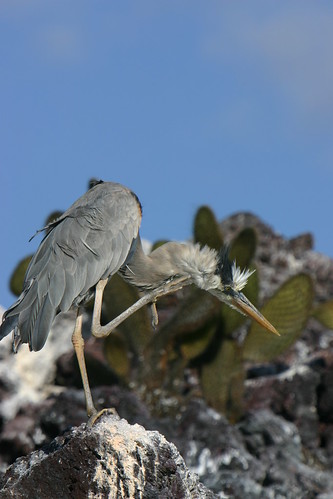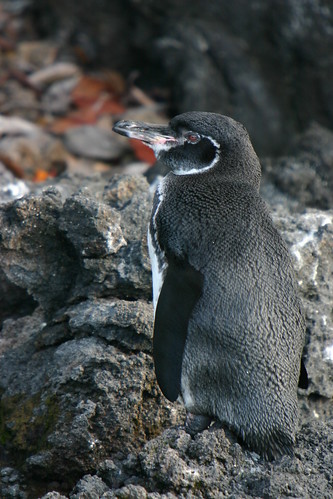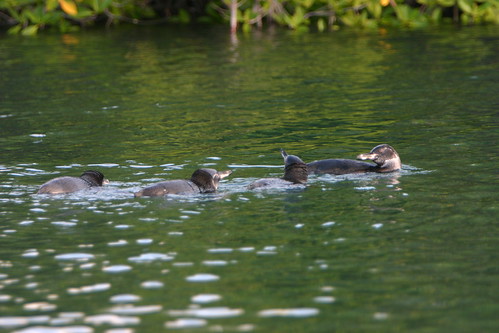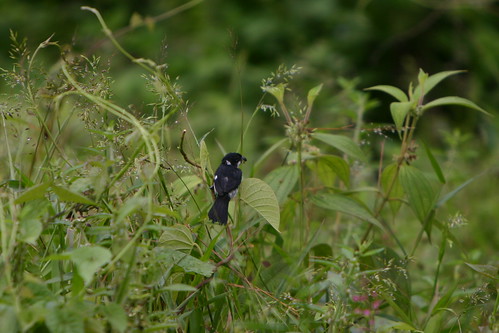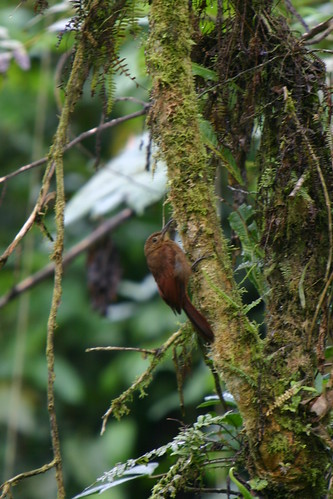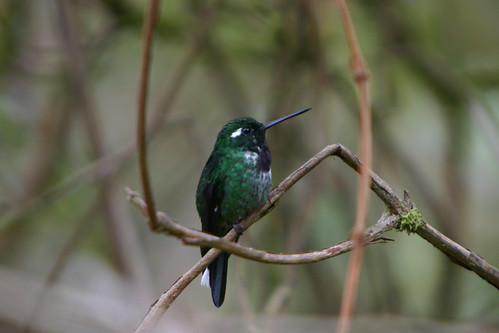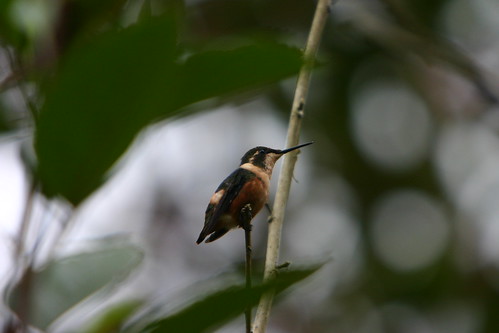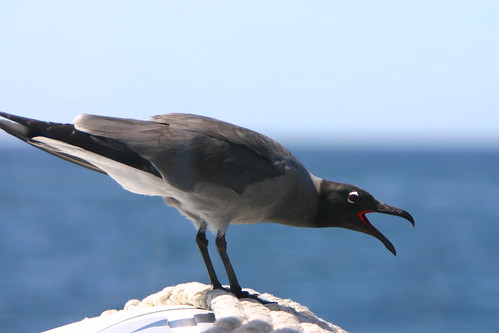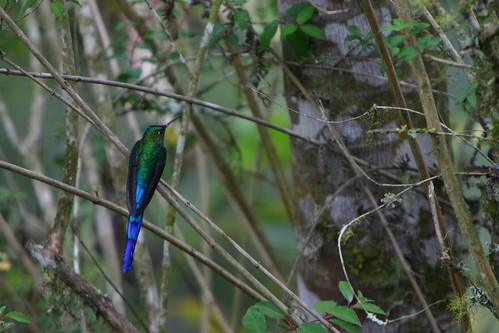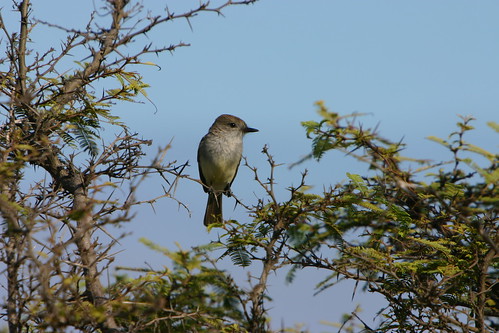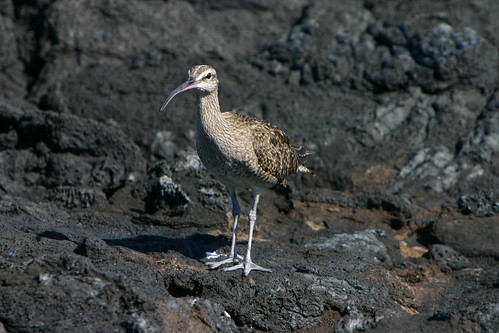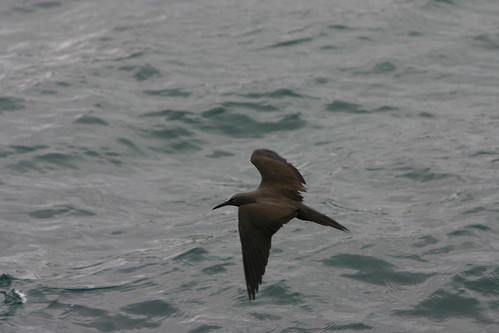Saturday, November 27, 2010
Magnificent Frigatebird (Fregata magnificens)
This was pretty typical - kind of like a teenaged boy... He would rattle his pouch, then check the sky to see if any of the ladies were watching. We wished him good luck.
Magnificent Frigatebird (Fregata magnificens)
This was one of those things that I had seen on countless nature shows when I was a kid. Seeing them in person was amazing!
Galapagos Flycatcher (Myiarchus magnirostris)
No other word for it. This bird is cute. Most of the birds on the islands were utterly unafraid of people, and some were downright inquisitive. This one was one of those.
Darwin Finches, Isla Santa Cruz, Galapagos
Larry Richardson was the leader of our group. We were in a forested area where we could hear birds, but we weren't seeing many. Just a little "Pishing" brought out a huge mixed flock. It was amazing.
Vermillion Flycatcher (Pyrocephalus rubinus)
Of the dozens of amazing birds we saw in the Galapagos, most were endemics. This little beauty is pretty common throughout Central and South America - it's even fairly common in parts of the US. I had never seen it before; it was one of the most exciting birds of the trip for me! This one was working from a dead limb right at eye level, and he let me get quite close.
Galapagos Pintail (Anas bahamensis galapagensis)
The background of this shot is a Santa Cruz giant tortoise. I love that.
Brown Pelican (Pelecanus occidentalis)
I just couldn't get enough of these birds.
Probably it's the poem:
"A wonderful bird is a pelican,
His bill will hold more than his belican.
He can take in his beak
Food enough for a week;
But I'm damned if I see how the helican."
Thank you, Grandpa Harrington, for introducing me to Ogden Nash.
Galapagos Great Blue Heron (Ardea herodias)
None of us look particularly dignified when we're scratching an itch.
Galapagos Penguins (Spheniscus mendiculus)
I had no idea that Penguins swam like this until I saw it.
One day, I was snorkeling and got to see them "flying" in the water. Their speed and grace are amazing.
Furnaciid
Septimo Paraiso Lodge near Mindo, Ecuador
Booted Racket-tail (Ocreatus underwoodii)
Septimo Paraiso Lodge near Mindo, Ecuador
I tried and tried, but I never got a picture showing both the "boots" and the "raquet" that didn't also have a feeder in it.
One good reason to go back!
Friday, November 26, 2010
Andean Emerald (Amazilia franciae)
These were especially difficult to photograph - I never did get a shot of one off of the feeders.
Tony and Barbara Nunnery's place, Tandayapa, Ecuador
Emerald Toucanet (Aulacorhynchus prasinus)
Tony and Barbara Nunnery's back yard, Tandayapa, Ecuador.
Violet-tailed Sylph (Aglaiocercus coelestis)
Even with their long tails, these guys were still just as aggressive as any of the others.
Tony and Barbara Nunnery's back yard, Tandayapa, Ecuador.
Plate-billed Mountain-toucan (Andigena laminirostris)
I really had never thought about Toucans eating anything other than Froot Loops until watching this one... He was eating Chlorophonia chicks.
In the back yard of Tony and Barbara Nunnery's home in Tandayapa.
Violet-tailed sylph (Aglaiocercus coelestis)
Another wonderful hummer at Tony and Barbara Nunnery's place.
Western Emerald (Chlorostilbon melanorhynchus)
Looks like someone's sequins got ruffled...
A gorgeous little hummingbird. This is in the back yard of Tony and Barbara Nunnery's place in Tandayapa. They have something like forty feeders, and the show is astonishing. They are gracious hosts - I could have spent all day there.
Yellow Warbler (Dendroica petechia) - Isla Fernandina, 12/8/2005

Yellow Warbler (Dendroica petechia) - Isla Fernandina, 12/8/2005, originally uploaded by Duane McDowell.
The male Yellow Warblers on the Galapagos have a fairly pronounced rusty-red cap.
Lava Heron (Butorides sundevalli)
A patient predator. This bird has a spider web between his bill and the top of his head, but he isn't moving a muscle...
Blue-footed Booby (Sula nebouxii)
The speed of these birds hitting the water was amazing. Flocks of them would dive into schools of small fish, leaving bubble trails behind them in the water. It was like watching arrows being fired into the ocean.
